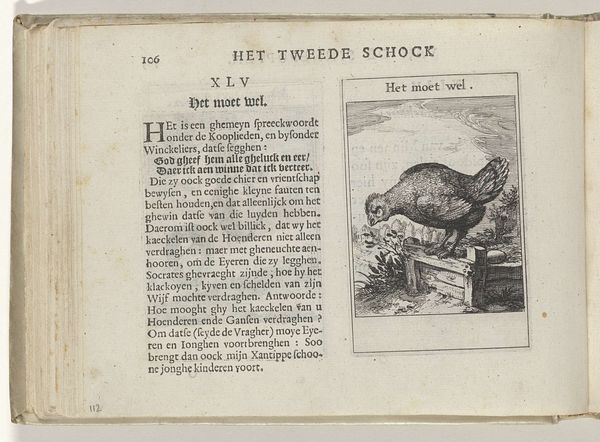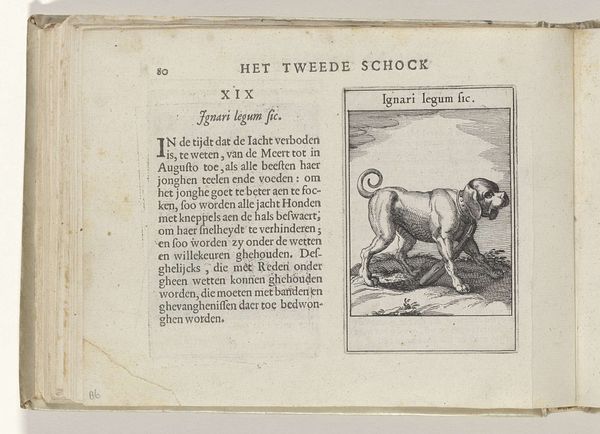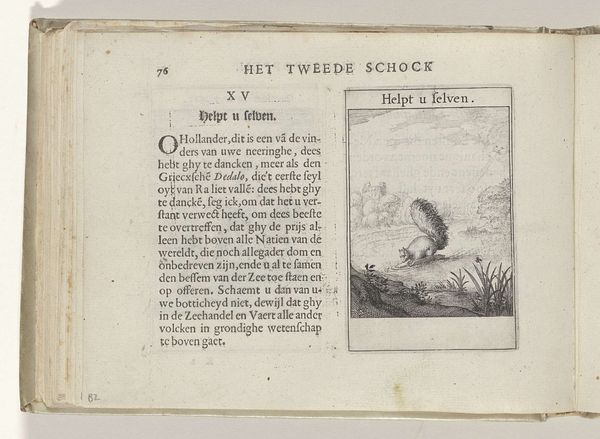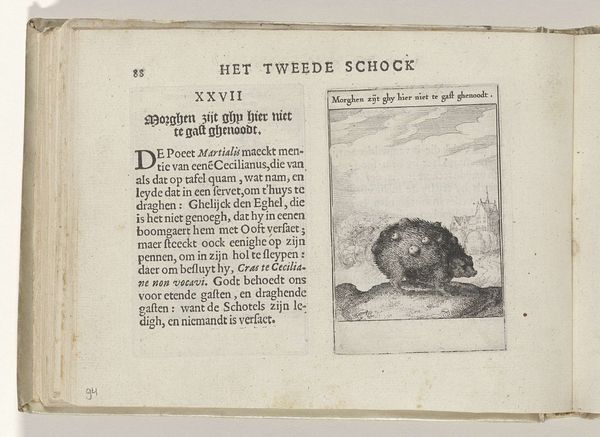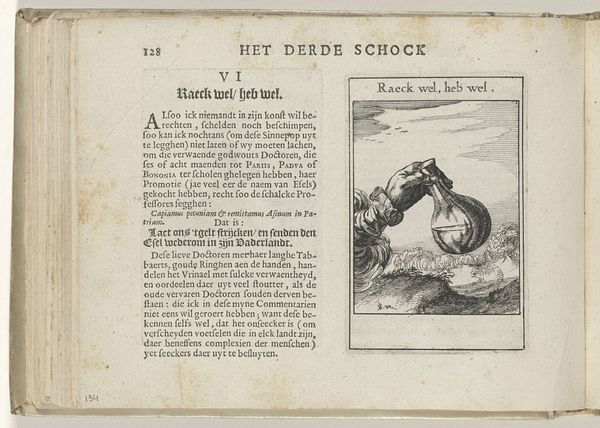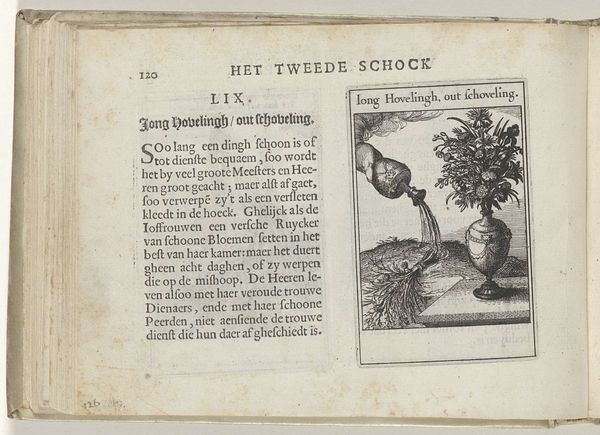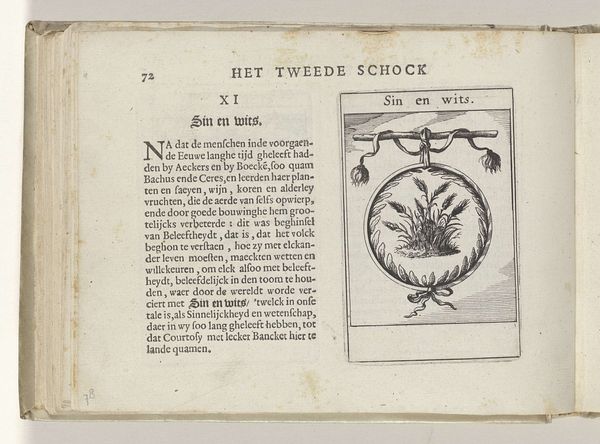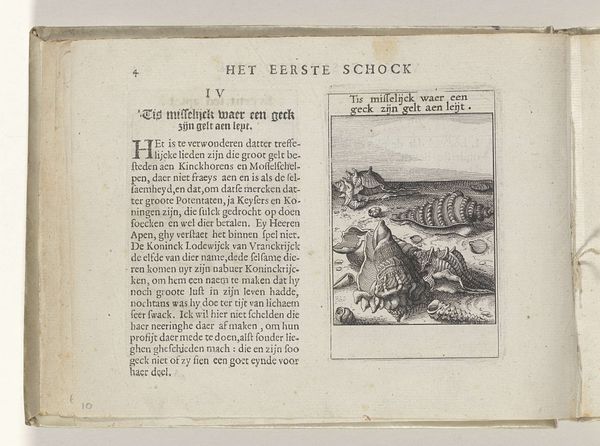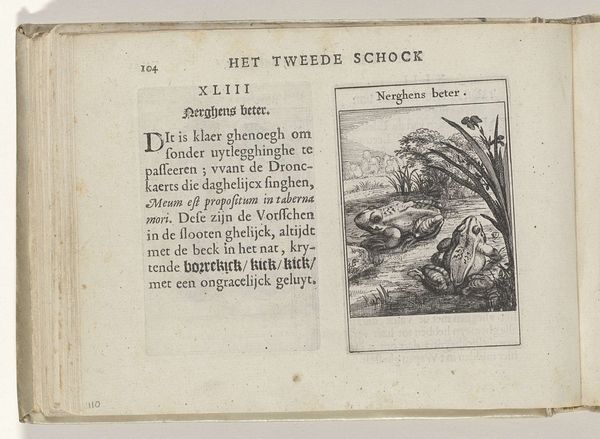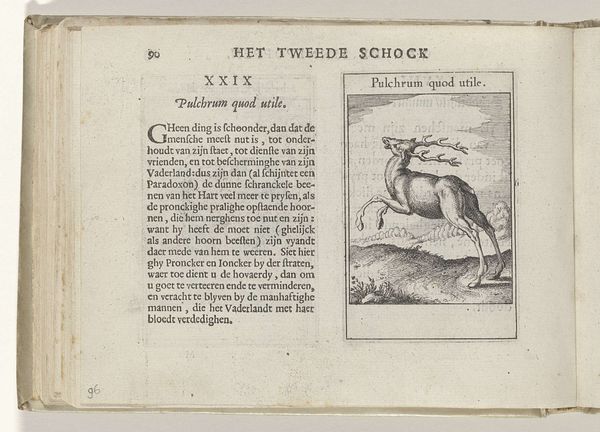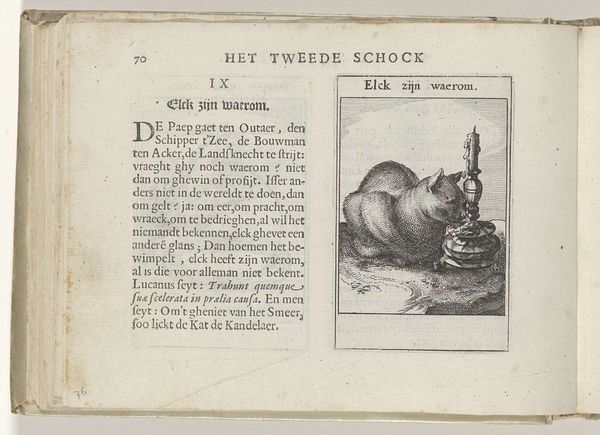
print, engraving
#
narrative-art
#
baroque
#
ink paper printed
# print
#
figuration
#
engraving
Dimensions: height 137 mm, width 188 mm, height 95 mm, width 60 mm
Copyright: Rijks Museum: Open Domain
Curator: This engraving from 1614, "III Hacht maer sacht," is by Roemer Visscher and is currently housed at the Rijksmuseum. The stark contrasts created by the engraving technique are quite striking. What is your initial reading of the piece? Editor: It seems like an allegory. I see a cherubic figure amidst falling coins. There is a second figure that appears to be some type of seal or dog next to the child figure. What do you see in this print, in terms of its visual language and construction? Curator: Let's begin with the formal structure. Notice the composition's reliance on geometric shapes— the rectangular frame around the illustration is a clear starting point. Now consider the figures within, they also adhere to a set of repeating shapes. The round face of the cherub reflects those same lines in the coin and creature in the background. The composition focuses attention on mirroring imagery and contrasting balance. What do you make of these techniques? Editor: So, you are saying it's less about *what* is represented and more about *how* it's represented, how the artist organized shapes and lines. Curator: Precisely. The effectiveness hinges on its formal arrangement, its structural integrity. Notice also the interplay of light and shadow—it's quite dramatic, isn't it? Does this dramatic contrast heighten your engagement with the print? Editor: I can see how this manipulation of light adds depth and drama, reinforcing the allegorical weight of the image, by giving an example of visual juxtaposition of light and dark between each figure on display. Thank you. I've never thought about art that way before, to prioritize its elements regardless of theme.
Comments
No comments
Be the first to comment and join the conversation on the ultimate creative platform.
